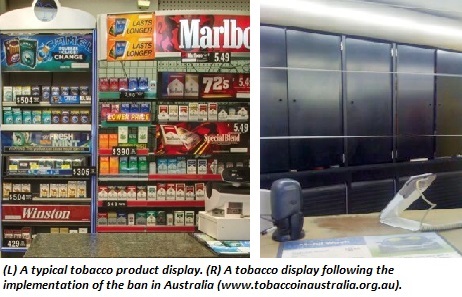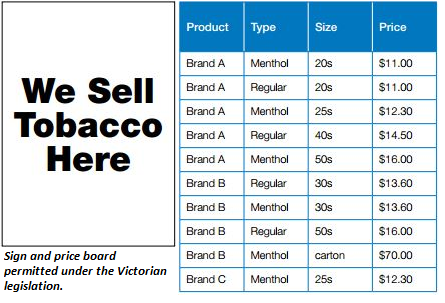Tobacco products seem to be pretty much everywhere: pharmacies (except CVS, which stopped selling tobacco products one year ago yesterday), supermarkets, gas stations, and convenience stores. Since the 1998 Master Settlement Agreement (MSA) between U.S. states and the tobacco industry restricted outdoor cigarette advertising, the tobacco industry has turned its focus, and increased its marketing expenditure, on advertising at the point-of-sale.
Point-of-sale advertising, including product displays, is a highly effective form of tobacco advertising and promotion. According to research in Australia, Canada, and New Zealand, point-of-sale displays stimulate smokers to purchase cigarettes, make it harder for recent quitters to abstain, and increase the likelihood that young people will start smoking.
It is time for governments around the United States to ban or restrict point-of-sale advertising. Tackling these creative and enticing displays is a crucial step towards properly protecting kids from the endless cycle of tobacco marketing.

Point-of-sale displays
Governments in many countries, including Australia, Canada, Norway, and Thailand have banned all tobacco advertising and promotion in retail outlets, including the display of tobacco products. In the state of Victoria, Australia, for example, it is illegal to display any tobacco products or packaging in retail outlets (with exceptions for “certified specialist tobacconists”). Retailers are permitted to display one A4 sign in a prescribed format that states “We Sell Tobacco Here”. Further, they may display one price board providing information about the tobacco products for sale (i.e., brands, pack sizes, and prices). The size, format, and contents of price boards are strictly regulated and boards must be accompanied by prescribed graphic health warnings.

Legal challenges
U.S. governments considering enacting bans will likely face strong opposition and legal challenges based on the argument that point-of-sale advertising bans violate First Amendment protections for commercial speech. In 2013, two proposed point-of-sale advertising bans were dropped. The village of Haverstraw, NY, the first jurisdiction to adopt a ban on cigarette displays in the United States, rescinded its municipal ordinance after the tobacco industry filed a complaint in federal court. In the same year, Mayor Michael Bloomberg withdrew a display ban provision from his package of anti-tobacco measures proposed for New York City.
There is no doubt that the tobacco industry will challenge future efforts towards point-of-sale tobacco advertising bans. Governments must work together with tobacco control attorneys to draft laws carefully to withstand challenges under the First Amendment, including application of the four part test set out in Central Hudson Gas & Electric Corp. v. Public Service Commission of New York. Tobacco control attorneys identify parts 3 and 4 of the Hudson test as the most difficult hurdles. To satisfy part 4 of the test in Hudson, any product display ban would need to allow for an alternative means for retailers and manufacturers to communicate information about tobacco products available for sale. An alternative means of communication could be developed along the lines of the signage and price boards permitted in Victoria, Australia. Governments should also work together with tobacco control researchers to build a strong evidence base to satisfy part 3 of the Hudson test, including evidence that product displays entice children to try or use tobacco products.
Although the United States has stronger protections for commercial speech than many other countries, it would be a costly mistake for law-makers to perceive the First Amendment as an insurmountable barrier to restricting point-of-sale advertising and displays. Meaningful restrictions are the only way to properly protect kids from the endless cycle of tobacco marketing.
Latest
Legal Comments on Medicare’s Site-Neutrality Proposal: A Preview of Potential Litigation
Katie Keith Suhasini Ravi



